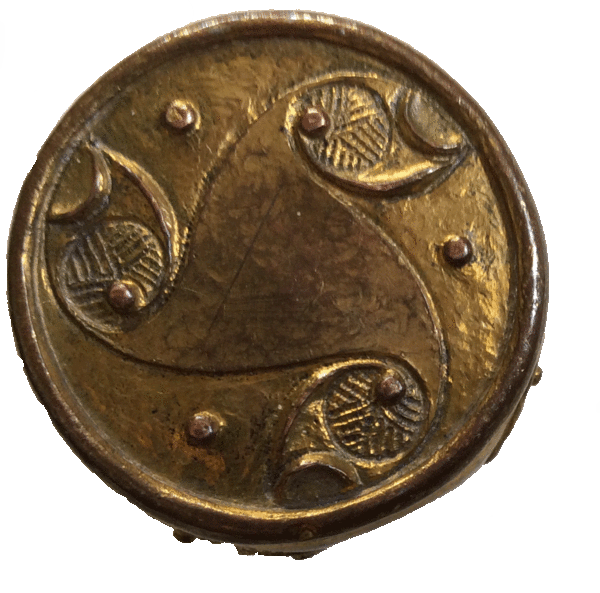Walk around the Redcliffe and Temple areas of Bristol with Bob Jones, former Head Archaeologist at Bristol City Council.
On the evening of 29th of July 2021, 15 members of the Clevedon and District Archaeological Society and the Bristol Folk House Ramblers joined Bob Jones for the walk.
We started from St Mary Redcliffe Church. This was built as a Chapel of Ease for a mother church in Bedminster which at that time was outside of the Bristol boundary. It was started in about 1150 but only the inner North porch, part of the nave and south aisle are from this period. The rest of the building is from the 13th to 15th century and it was much restored in the 19th century. Water was brought from the Knowle area to a pump in the churchyard via the Redcliffe Pipe. This was cut when the New Cut was constructed in the early 19th century as part of the creation of the Floating Harbour. The Pipe was diverted to cross the New Cut at Bedminster Bridge.
We then walked over Redcliffe Hill to the Quaker burial ground. This was in the area of the Hospital (built 1180 by the Monks of the Sack) and the Hermitage both of which were dedicated to St John. These institutions were dissolved in 1544. On the site was the first Shot tower built in 1775 by William Watts who invented the process of pouring molten lead through a perforated zinc pan and dropping 90 feet in to water. The Quaker burial ground was abandoned in the 1920s.
Next, on to the waterfront at Redcliffe Quay where the Matthew was reconstructed in the 1990s. This area was once an important glass making centre, the sand for the process being dug out of the Redcliffe caves. Glass was exported all over the world including to America, the trade carrying on (illegally) during the American War of Independence.
Our next stop was the site of the Redcliffe Gate in the Portwall at the end of Redcliffe Street. The west side of this street was originally the bank of the River Avon making the river about twice the width it is now. Over the centuries the bank was pushed westwards by the depositing of rubbish and rubble. The last phase was in the 19th century when the warehouses (originally for products such as grain and cheese, now all converted in to flats) that line the river were constructed. This area is very interesting to archaeologists because of all these deposits. As it is low lying with a high water table, organic matter including shoes and barrels remain well preserved.
Bob then took us down an alley off Redcliffe Street that at first site seemed to be a court yard for the dustbins of the new blocks of flats. However behind the dustbins was an arcade of Gothic arches and a piscina which had been part of William Canynge's House and Great Hall where he entertained KingEdward IV.
This house was not destroyed in the war but demolished in 1937. Canynge (died 1474) was a wealthy Bristol merchant who was Mayor of Bristol on 4 occasions. At the end of his life he took Holy Orders and was Dean of Westbury on Trym College. He has two tombs in St Mary Redcliffe, one having been moved from the College.
We went on to the site of the new Magistrate's Court near St Thomas' church. This was very much in the centre of the industrial area of Medieval Bristol. The digs have revealed evidence of cloth making and metal working. St Thomas' has a 15th Century tower, the rest is 18th century We passed the Seven Stars Inn where Thomas Clarkson gathered information from sailors from slaving ships and planned his campaign to abolish the slave trade.
We then walked past the Fleece music venue on to Victoria St. Bob explained the the 4 houses that have a sign saying they were built in 1456 are in fact from the 17th century.
We looked towards Bristol Bridge . The present bridge is 18th century with a 19th century superstructure. It replaced a Medieval bridge with 4 storey houses on each side of the road and a grand chapel in its centre with wonderful stained glass.
We then went in to the old Courage (formerly George's) Brewery site, now redeveloped into flats, hotels and pubs. Many of the old buildings including the Well Head House and the old Finzels Sugar refinery have been retained and restored. We stood on the new pedestrian bridge over the Avon.
Our last stop was at The Temple Church . This was founded in 1150 as a round church for the Knights Templar. It was rebuilt in 1390 on more usual lines. The tower was built in 1441 and started to lean during its construction because of the marshy ground. In was fire bombed in Bristol Blitz in 1940/41.
Bob was a most interesting guide because of his wealth of knowledge about Bristol and we all enjoyed the walk around the Redcliffe and Temple areas.
Tom Chown
3 August 2021
